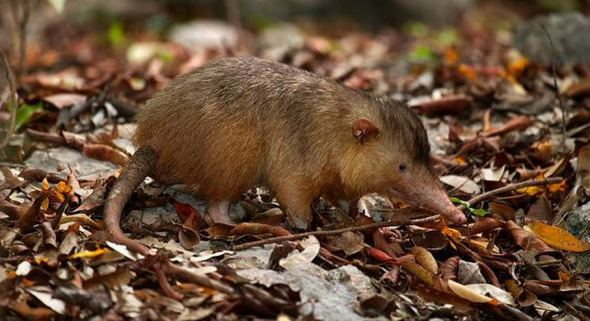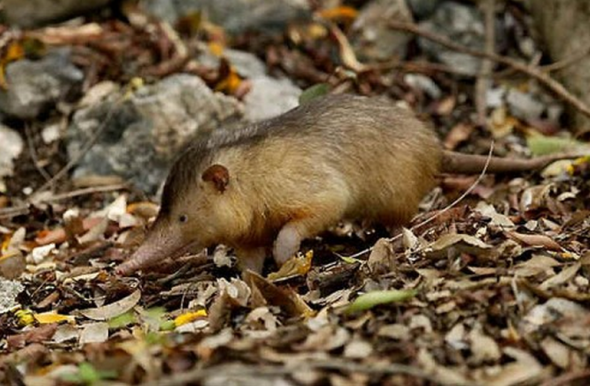Endangered Species Friday: Hispaniolan Solenodon.
Endangered Species Friday: Hispaniolan Solenodon
This Fridays endangered species article we focus on a very peculiar looking animal scientifically named as the Hispaniolan Solenodon pictured above.
Listed as (endangered) the species is endemic to the Dominican Republic and Haiti of which was identified back in 1833 by Dr Johann Friedrich von Brandt (25 May 1802 – 15 July 1879) was a German naturalist.
Dr Brandt was born in Jüterbog and educated at a gymnasium in Wittenberg and the University of Berlin. In 1831 he was appointed director of the Zoological Department at the St Petersburg Academy of Sciences, where he published in Russian. Brandt encouraged the collection of native animals, many of which were not represented in the museum. Many specimens began to arrive from the expeditions of Severtzov, Przhevalsky, Middendorff, Schrenck and Gustav Radde.
At first glance one would be led to believe that the H. solenodon was a type of rodent. The species is in fact a a type of shrew in the family of Solenodontidae identified by Dr Gill in 1872. While they may posses the same characteristics as rodents they do not fall into the super-class of Euarchontoglires that rodents do.
H. solenodon has been classified as (endangered) since early 1982 up to 1996 when a more in depth census undertaken on the species failed to locate any significant evidence of species population increases. To date 29th May 2015 the H. solenodon commonly named as the Haitian Solenodon or Hispaniolan Solenodon remains endangered and is nearing extinction level.
Solenodons which in (Latin means - slotted tooth) are not a creature to be underestimated either as of their pretty nasty venomous bite that does pack a rather large punch. Solenodons are one of very few species of small “rodent like shrews” that’s bite is much worse than its bark.
The solenodon is particularly fascinating because it delivers its poison just as a snake does—using its teeth as a syringe to inject venom into its target. Not a lot is known about these unusual mammals. There are only two solenodon species: One lives on Cuba and the other on Hispaniola (home to Haiti and the Dominican Republic). At night, they dig in the dirt with their Pinocchio snouts and long claws, looking for grub and waiting to disarm their prey—insects, worms, snails and small frogs and reptiles—with a toxic bite.
While their venom is not dangerous to humans we do advise that if handling to please wear a good protective layer of gloves. There have been no reports of humans falling ill or dying from being bitten by a solenodon.
The Haitian solenodon is found in forests and brush country, as well as around plantations. It is mainly nocturnal, hiding during the day in rock clefts, hollow trees, or burrows which it excavates itself. Its diet includes insects and spiders found in soil and leaf litter. Solenodons obtain food by rooting in the ground with their snouts and by tearing into rotten logs and trees with their foreclaws. This species is relatively social, and up to eight individuals may inhabit the same burrow. Litter size is 1 or 2 young. The young are born in a nesting burrow. Young solenodons remain with their mother for several months, which is exceptionally long for insectivores.
Population trends are unfortunately decreasing of which its major threats are listed below for your immediate attention.
Threats
The most significant threat to this species appears to be the continuing demise of its forest habitat and predation by introduced rats, mongoose, cats and dogs, especially in the vicinity of settlements. In Haiti persecution and hunting for food (Samuel Turvey pers. comm.) is a threat, and there is devastating habitat destruction also occurring.
Please view the video below for further information.
Thank you for reading
Dr Jose C. Depre
Chief Environmental & Botanical Officer.
Chief Executive
International Animal Rescue Foundation Africa.





